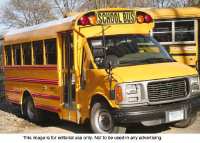Lap belts an issue for school bus safety

Posted by peter88
from the Automotive category at
13 Jul 2011 09:32:15 pm.

Safety experts, including the Canada Safety Council, do not believe seat belts on school buses improve safety. In fact, research in both Canada and the U.S. has shown that lap belts could actually increase the risk of head injuries in a head-on collision (the most common type of bus collision). Lap belts hold a child's pelvis firmly in place, allowing the torso and neck to whip forward. This occurs with great force, enabling the head alone to hit the seat in front of the rider, potentially resulting in fatal or life-threatening injury, according to experts.
A combination lap-shoulder belt, as is standard in most passenger vehicles, is a safer method of child restraint. Legislators in the U.S. are still debating whether buses should switch over from lap belts to the combination type found in cars. Still, only small, lightweight school buses feature them. That's because the cost to outfit larger-capacity buses could be more than some school districts can afford.
Although some parents may be weary about letting children ride unsecured in a school bus, seatbelts have been absent from school buses for years -- without major incident or loss of life.
According to the Canada Safety Council, school buses are not passenger cars and are designed and built with different methods of safety. They are crafted to protect riders through something called compartmentalization. This means the protection lies heavily in the design of the seats. Seats are placed close together to cocoon passengers. High backs protect heads and necks, and energy-absorbing materials in seat cushions also offer safety in a collision.
Should shoulder belts be required, they would necessitate the redesign of seats, mandating that they be more rigid. This could put riders who fail to buckle up at greater risk. A school bus driver cannot assure that every rider on the bus will fasten a seatbelt, and checking student-by-student could be a matter of time and money.
Statistics indicate that fewer than 10 passengers a year die in school bus crashes in the U.S. On average, two of those deaths are in head-on crashes. NHTSA says the inclusion of shoulder-lap belts would prevent only about one student death a year.
For some supporters of seatbelts on buses, this is enough. When talking about saving children's lives, advocates offer that safety should be put before cost and potential misuse every time. The American Academy of Pediatrics supports seatbelts on buses, saying that they go a long way toward preventing injuries, not only deaths. Furthermore, advocates say that seatbelts on buses keep the message consistent to children that buckling up whenever riding in a moving vehicle is essential.
0 Comments



